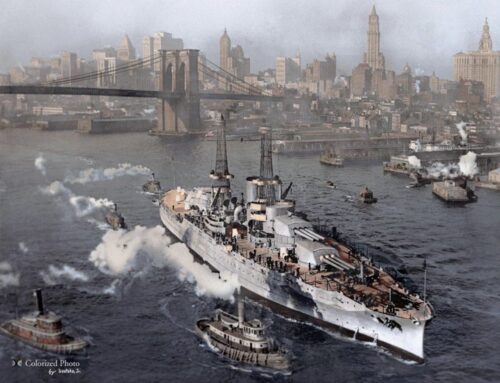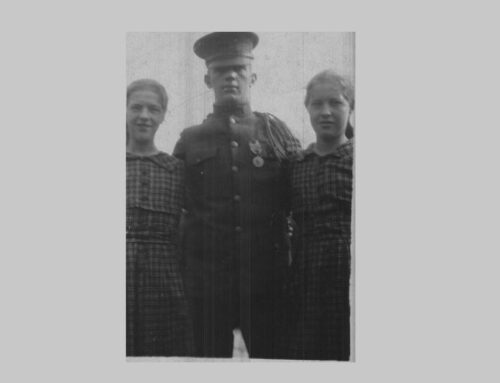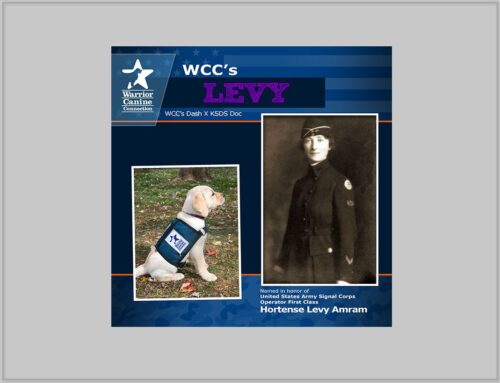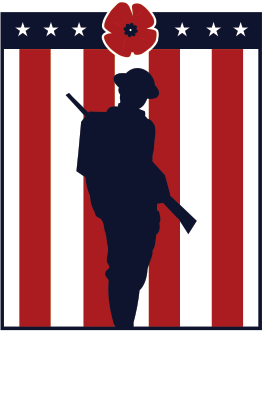Doughboy MIA for April 2025: Lieutenant Walter Craig
Published: 25 April 2025
By Alexander Curran
Researcher
Doughboy MIA
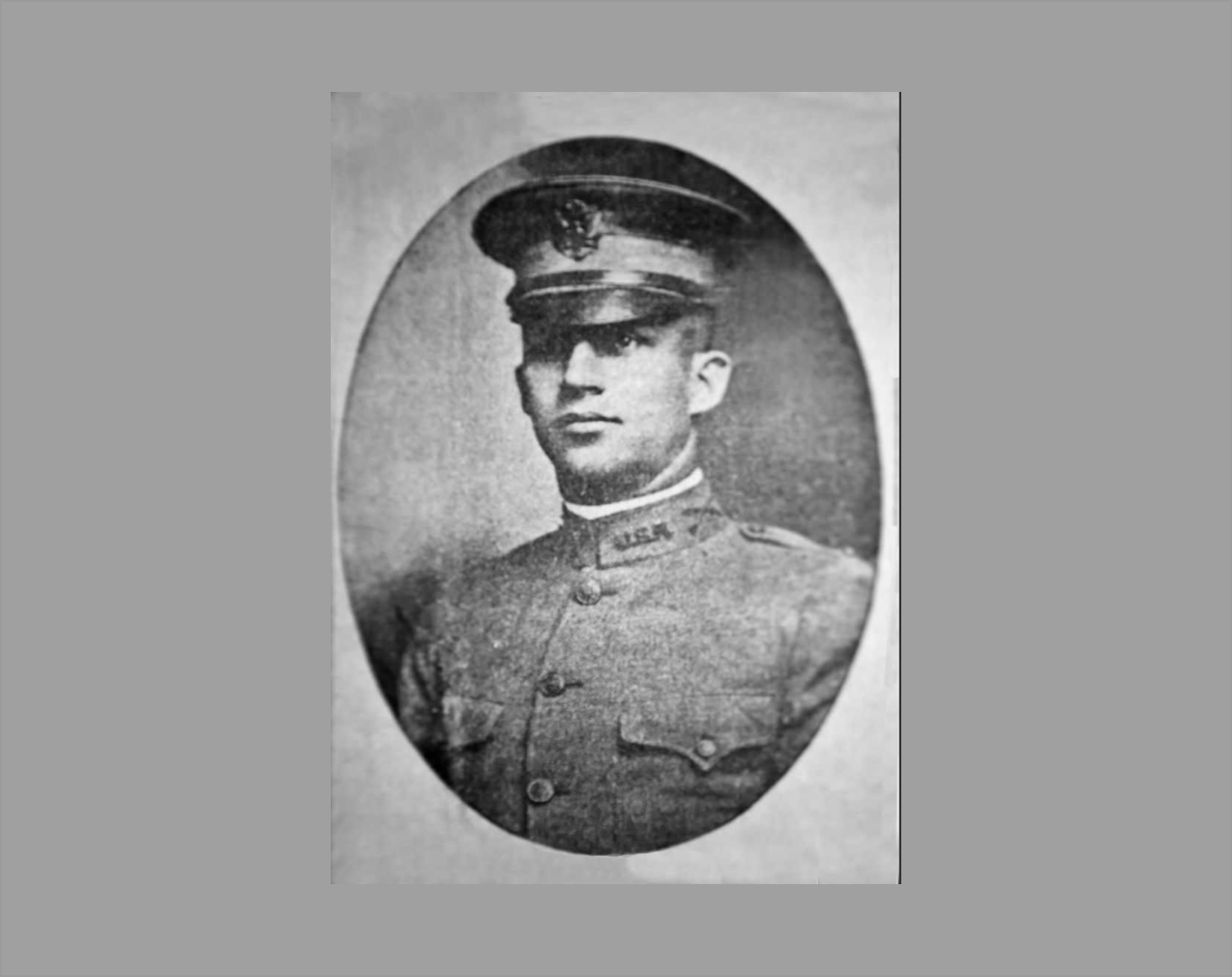
Walter Craig framed
Walter Craig was born on January 5, 1892, in Climax, Pennsylvania. He graduated from New Bethlehem High School in 1913, where he was an active member of the school basketball team. Walter came from a family with a long tradition of military service dating back to the Revolutionary War. His grandfather died as a Prisoner of War at Andersonville Prison during the Civil War. When the U.S. entered the war on April 6th, 1917, Walter was a sophomore at the Carnegie Institute of Technology. Eager for active duty, he enlisted in the Army and attended officer training at Fort Oglethorpe, Georgia, in December 1917. In April 1918, he was assigned to Company K, 59th Infantry Regiment, 4th Division as a Second Lieutenant. That same month, Walter married Phyllis Thompson of Alexandria Bay, New York. He sailed for France the following month.
On July 19, 1918, Lieutenant Craig was wounded during the Aisne-Marne Offensive. While recovering at Base Hospital #31, he sent a letter home describing his condition. Dated July 23, it read:
“Just a few lines to let you know I am alive and almost well. Went over the top on the morning of the 19th. Received a slight shrapnel wound in the left thigh. Shrapnel pulled across the front of my body instead of coming right at me. Otherwise, the tale might have been different. It simply opened up a gash about an inch and a half on the front of my leg. I was also slightly gassed at this time. The wound is almost healed up, but my lungs are a little out of order. I will be O.K. in two to three days from now.”
Unfortunately, the letter did not reach his family in time. The casualty lists reported him as having died from his wounds. A memorial service was held back home in his honor on August 9, 1918. Shocked to see himself reported as dead and not lightly wounded, Lieutenant Craig immediately contacted a Y.M.C.A. worker to send a telegram home to notify his family that he was alive. However, the worker reportedly fell ill, and the telegram was never sent. It wasn’t until August 17th that his family received his letter, dated July 23. Lieutenant Craig promised to write home as soon as possible if he were ever wounded in the hospital again.
On October 6, 1918, Lieutenant Craig was killed in action, though the details surrounding his burial remain unclear. Second Lieutenant Donald Heffron, from the same company, provided an eyewitness account to the Graves Registration Service. He recalled:
“I was the commander of the second Platoon, and Lieutenant Craig had the first. The company commander ordered Lieutenant Craig to form his platoon and face it to the left. This made it necessary for his platoon to be moved forward, and the men were ordered beforehand to dig in the moment they halted. This movement was well underway, and the platoon was moving forward in column files, Lieutenant Craig leading the way. A machine gun opened fire, and Lieutenant Craig and one Corporal fell. The fire was unexpected, the surprise complete, and the men fell back. I reorganized them, and we stayed there that night, although there were three counterattacks. The next morning, the Company was formed, and we took this position. The Corporal’s body was found, but only Lieutenant Craig’s gas mask and helmet were found. He was probably wounded and captured.”

A map drawn by Lieutenant Heffron showing the route Lieutenant Craig’s patrol took leading to his death.
In 1921, J.W. Smith of the 341st Field Artillery Regiment reported that on November 13th, 1918, he saw the grave of Lieutenant Craig in Bois de Fay. The grave was marked by a helmet and rifle, with an identity disc hanging from the rifle. He noted the grave was located 100 yards from the grave of Private John Seaton of Company “M,” 59th Infantry Regiment.
Based on this, the Graves Registration Service contacted Chaplain William Sherman, who had buried Private Seaton, to inquire about the possible burial of Lieutenant Craig. Chaplain Sherman reported:
“On October 26, 1918, I buried Private John Seaton and Alfred Wiers on the edge of Bois de Fay, facing towards Madeleine Farm. These are the only two I buried here with the exception of some members of my own Regiment, the 6th Engineers. Around that time, some soldiers had been occupied in collecting dead bodies and taking them to the cemetery at Madeleine Farm for burial. It is possible the body of Lieutenant Craig had been taken there for burial.”
In 1922, the Graves Registration Service attempted to identify Lieutenant Craig from the remains of an Unknown Officer (Unknown Soldier-3689) recovered from Brieulles-sur-Meuse. The remains were found with a Sam Browne belt, Officer collar ornaments, 1st Lieutenant Insignia, and other miscellaneous items. The identification was rejected, as the dental charts did not match, and Lieutenant Craig would have worn 2nd Lieutenant insignia. The investigation was stalled until 1927 when Lieutenant Craig’s father pressed the Graves Registration Service for more details.
In 1930, a new lead emerged suggesting that Lieutenant Craig may be the identity of U-4202, another Unknown Officer recovered from Brieulles-sur-Meuse. This identification could not be confirmed due to dental chart discrepancies. No further leads were found, and Lieutenant Craig was left unlocated.
Lieutenant Craig is recorded on the Tablets of the Missing at the Meuse-Argonne American Cemetery in Romagne-sous-Montfaucon, France. American Legion Post 354 in New Bethlehem, Pennsylvania, is named in his honor.
Would you like to be involved with solving the case of Lieutenant Walter Craig, and all the other Americans still in MIA status from World War I? You can! Click here to make a tax-deductible donation to our non-profit organization today, and help us bring them home! Help us do the best job possible and give today, with our thanks. Remember: A man is only missing if he is forgotten.
